What CIPD’s Good Work Index 2021 reveals about how employees are feeling
In June the CIPD released its Good Work Index 2021 report, providing an annual snapshot into how employees are feeling about their working lives. The research surveyed around 6,000 employees who work in a variety of sectors and occupations, asking questions relating to a number of aspects of their working lives.
While it’s been going since 2018 (originally known as the “UK Working Lives” report) this year’s index takes on a particular significance given what it can tell us about job quality and employee experiences throughout the pandemic. During the crisis, there’s understandably been an emphasis on the need to protect jobs – but in some cases that could have come at the expense of the quality of those jobs. The index offers useful insights into what employees are thinking and where efforts need to be targeted to make their lives better and help them perform at their best; some of the insights we found particularly interesting related to how employees are feeling about relationships at work and whether they feel their voice has been heard throughout this difficult time.
Home working has had a positive effect on working relationships
Working relationships are of fundamental importance, affecting how people feel about the work they’re doing and the organization they’re doing it for and influencing their performance overall. So how do employees feel about their relationships given the tumultuous time we’ve all had to cope with over the previous 18 months?
One of the surprising findings is that remote workers actually reported better workplace relationships over those who were not working remotely. The graph below shows the mean scores in terms of work relationships and remote working. And it’s interesting to note a few things. Homeworkers’ responses indicated that, overall, line manager relationships were stronger. A greater proportion of the people working from home felt their line manager was more supportive compared to those who never worked from home. Full-time homeworkers had better psychological safety than those who were not home working. 23% of the employee group that never worked from home expressed the view that people in their team were sometimes rejected for being different – this perception dropped to 14% in the group of homeworkers.
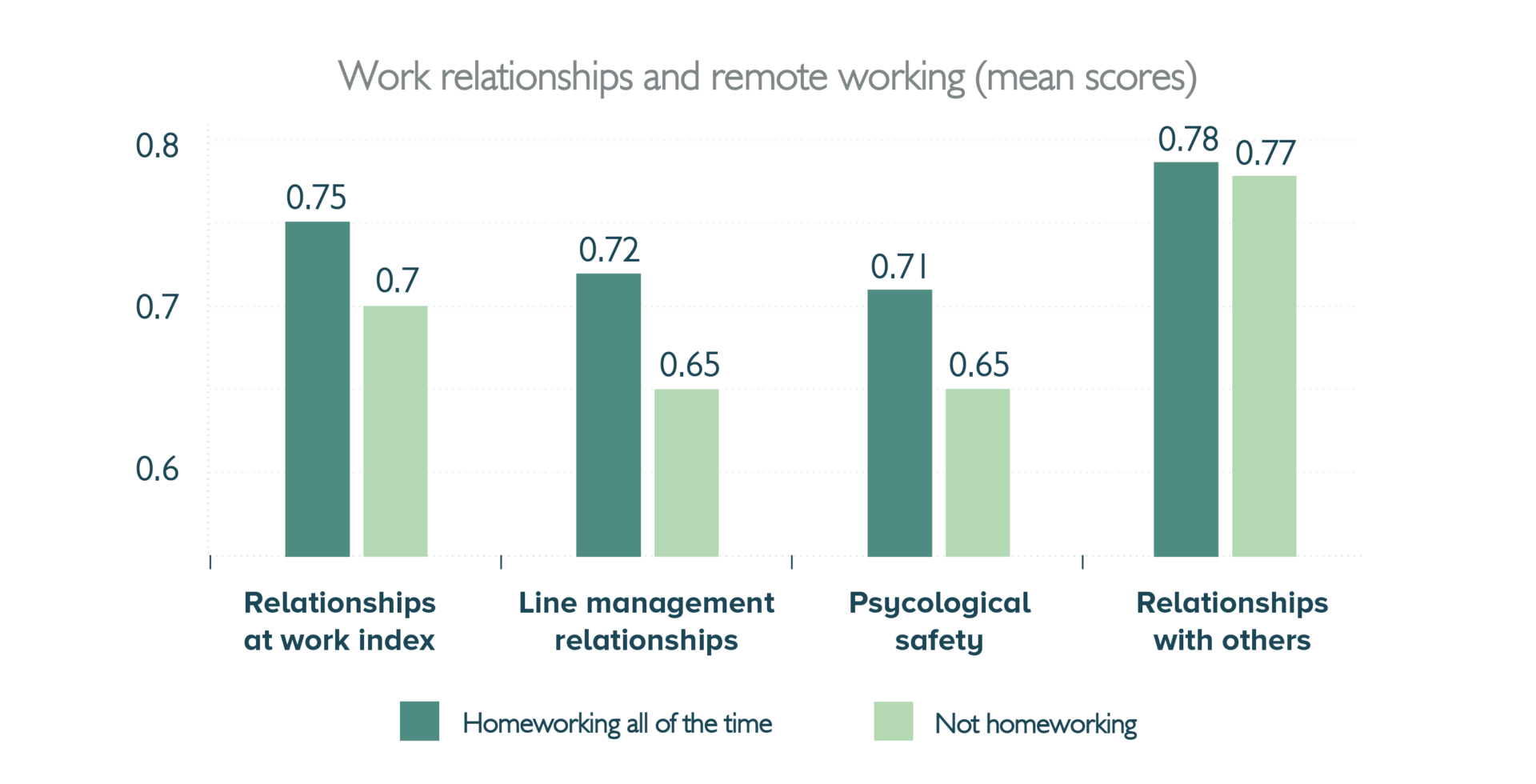
The research controlled for occupational differences across the responses given, so it genuinely does appear that this positive effect on working relationships is a result of working from home. Any amount of working from home was associated with more positive line management relations and the higher the number of days spent working from home, the stronger this association became.
Working relationships undoubtedly changed during the pandemic. These results might reflect the fact that managers were putting more effort into relationships once employees were no longer based in the same physical space as them. Is there an assumption that physical proximity means relationships are able to take care of themselves to some extent but that’s not actually the case? Taking conscious steps to nurture relationships is every bit as valuable irrespective of whether people are physically together or not.
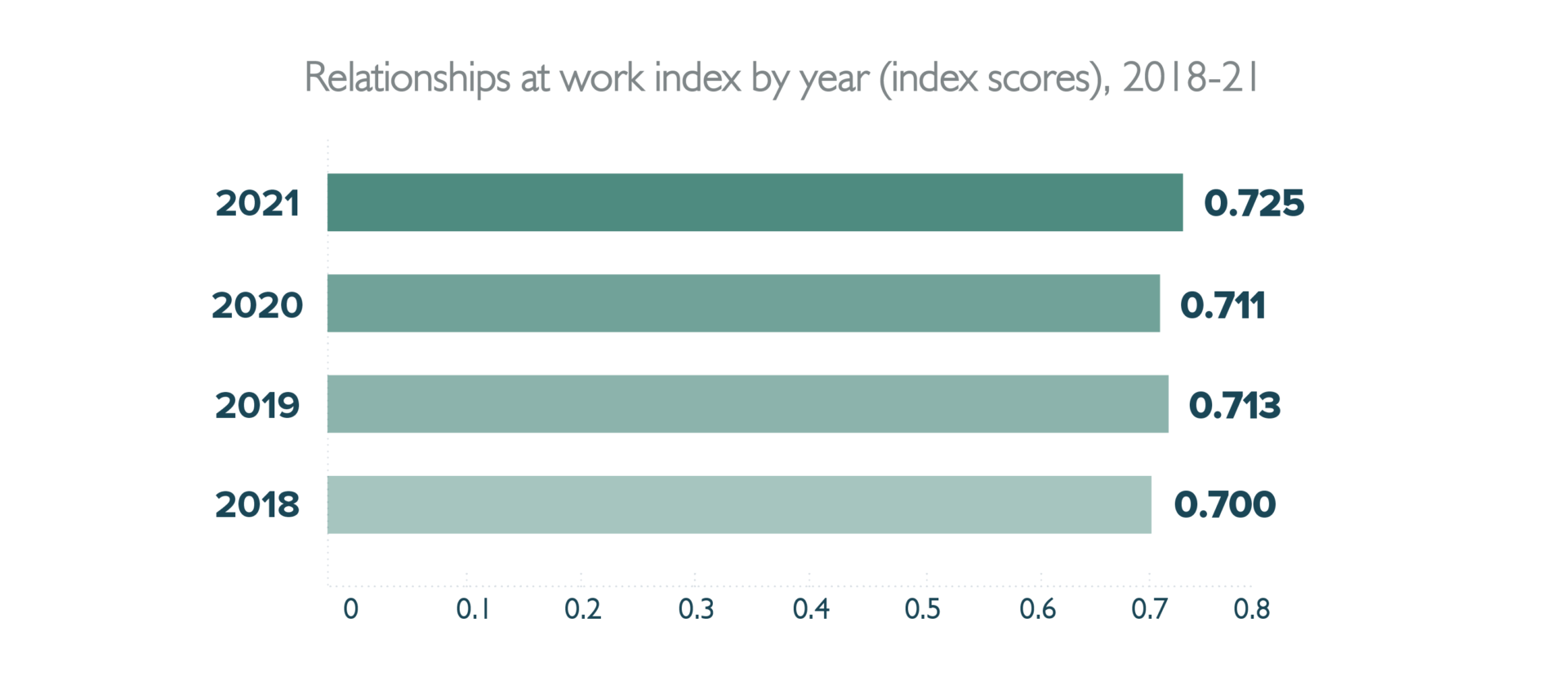
This is also borne out in the analysis of fluctuations in ratings of work relationships since the index started in 2018. The index survey is carried out at the start of the year, so the 2020 figures didn’t reflect the pandemic’s impact but the 2021 figures do. And intriguingly it indicates relationships have strengthened rather than diminished. Perhaps the heightened sense of the need to “be human” and to show concern for one another has had a positive impact.
The effect of furlough
On a less positive note, the survey found that employees who were furloughed had a lower sense of psychological safety and their ratings of line manager relationships were lower too. This was more noticeable for those who had been furloughed full time, or for a high number of hours each week – with an index score of 0.69 as opposed to 0.73 when it came to overall positivity about relationships.
Do employees feel they have been listened to?
Some of the findings relating to employee voice reinforce the impression that organizations have put more effort into effective meaningful communication.
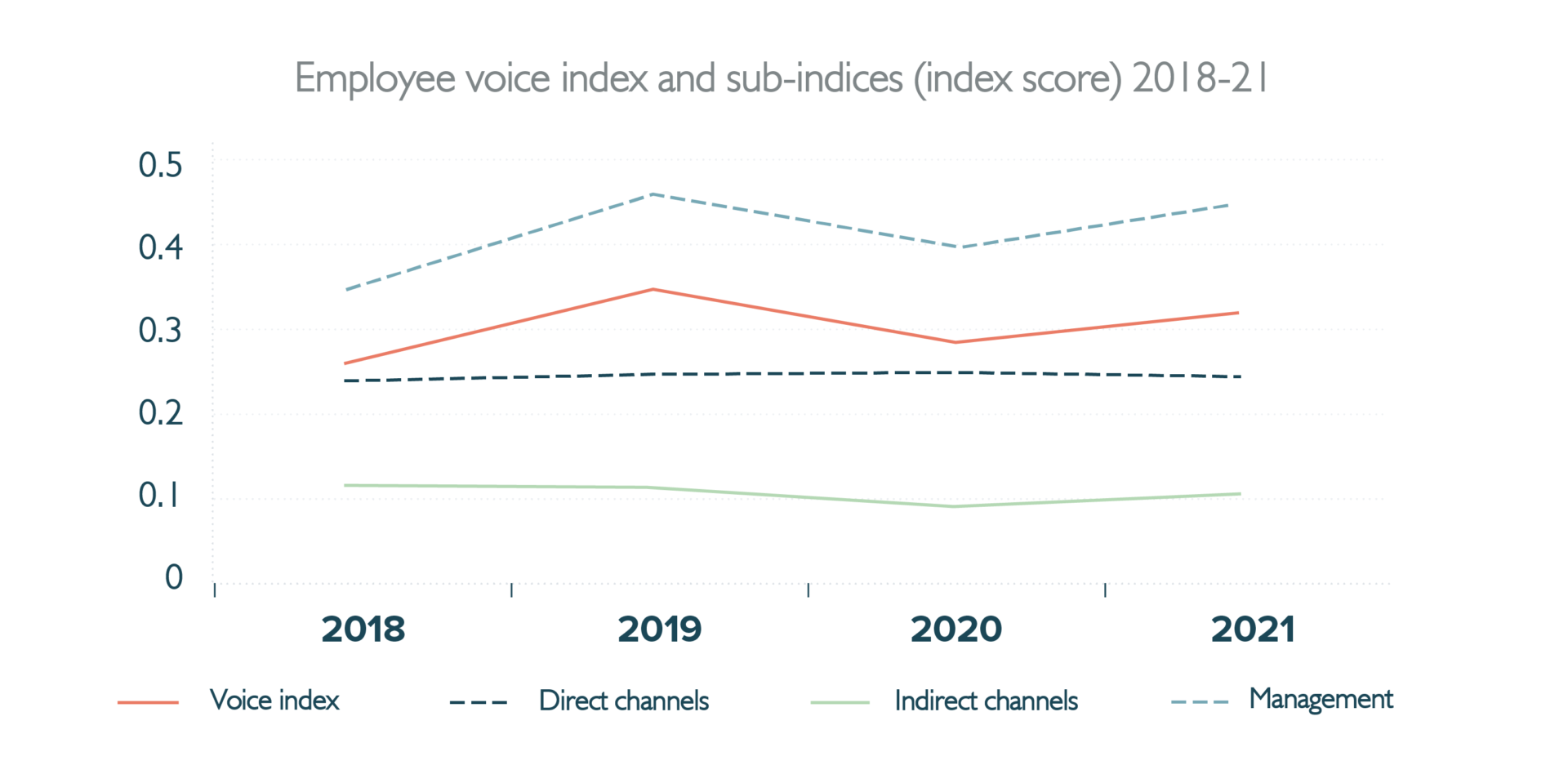
While the mean scores haven’t had a resounding increase, the overall picture looks encouraging with a larger number of employees saying they felt that managers or employee representatives were more effective at channelling their views than in 2020. 48% felt managers had been effective at asking employees their views – an increase on 2020.
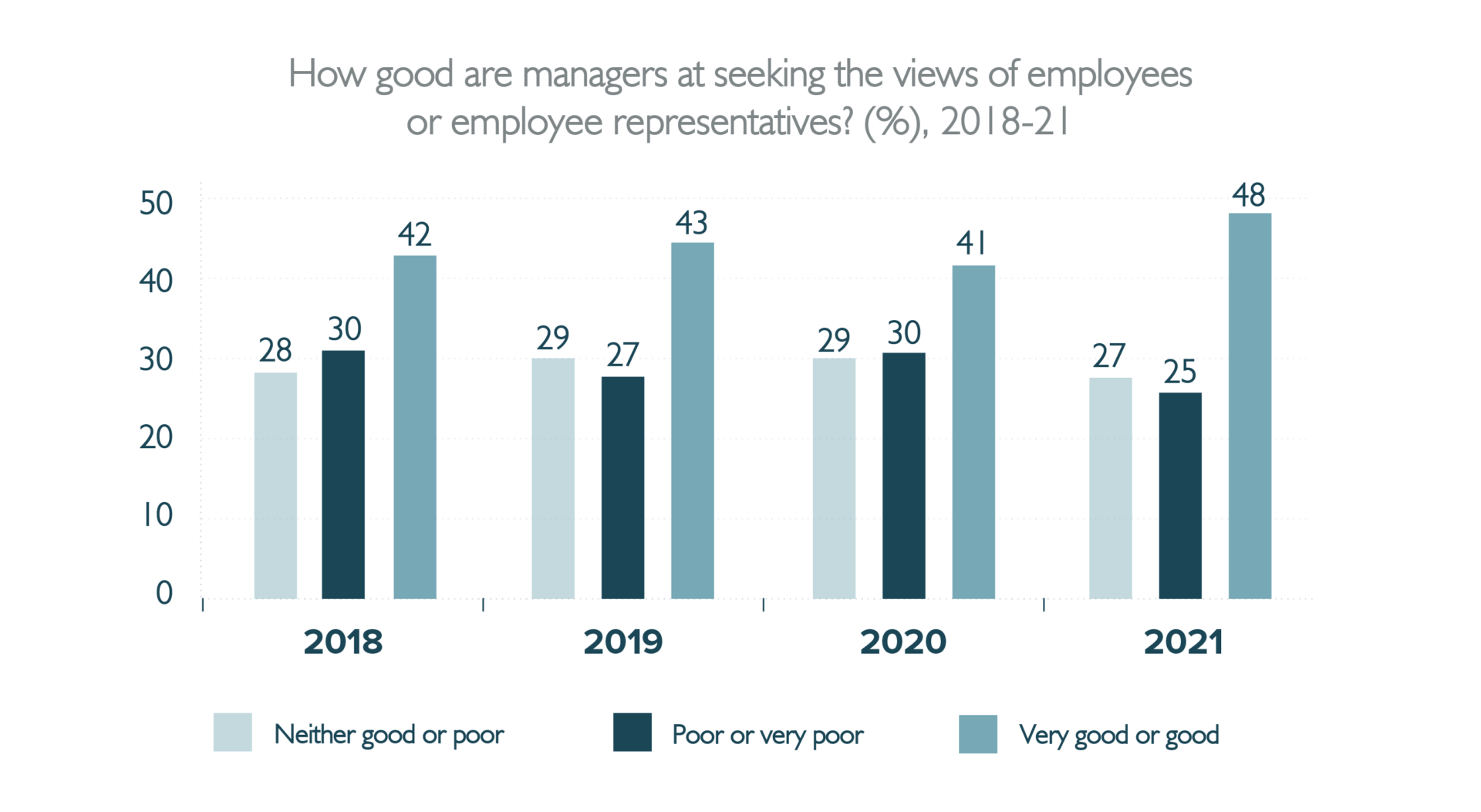
And the role of employee representatives was also viewed more positively with an increased number of ratings that were either good or very good in relation to both conveying employee views as well as getting back to employees to share the outcomes of discussions.
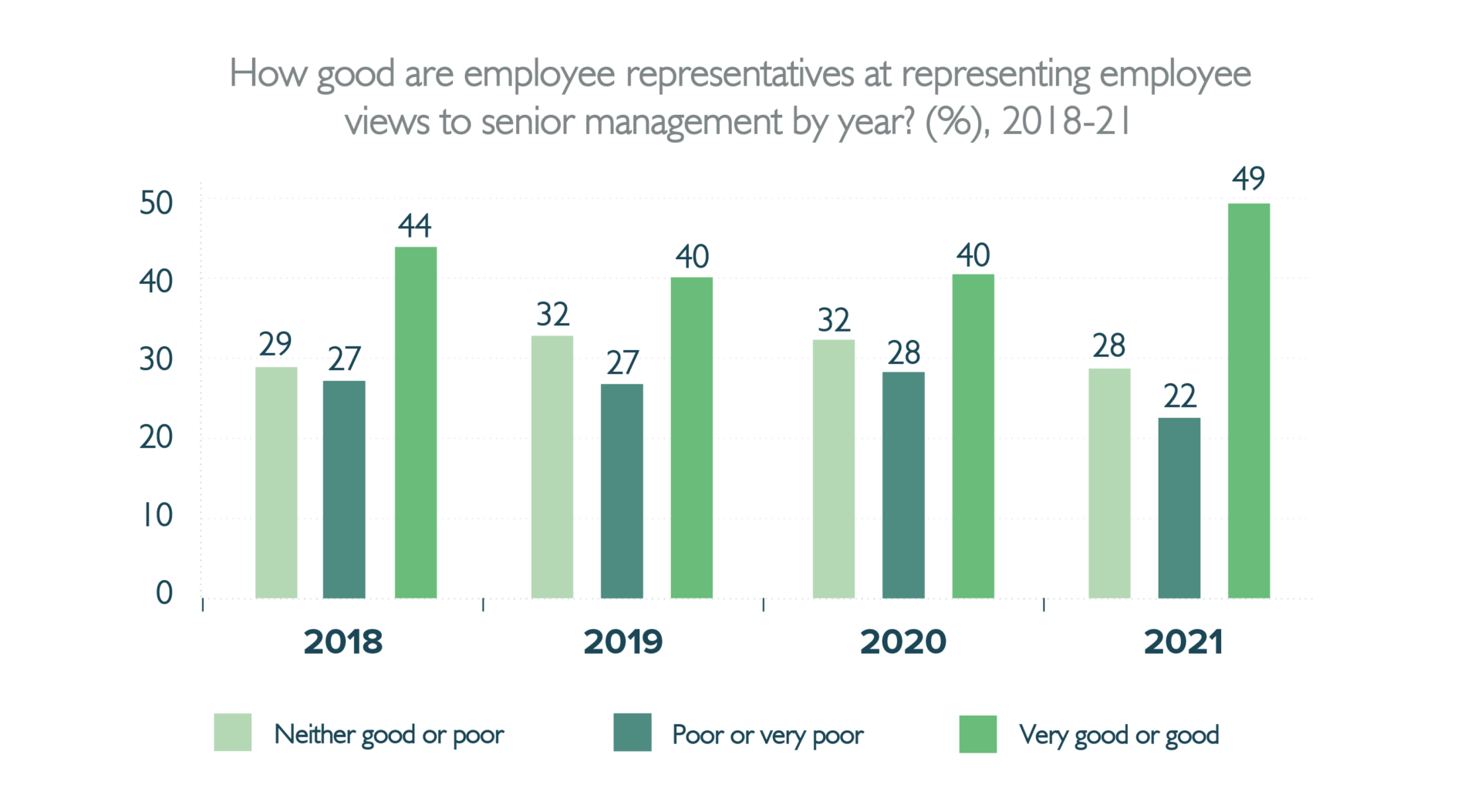
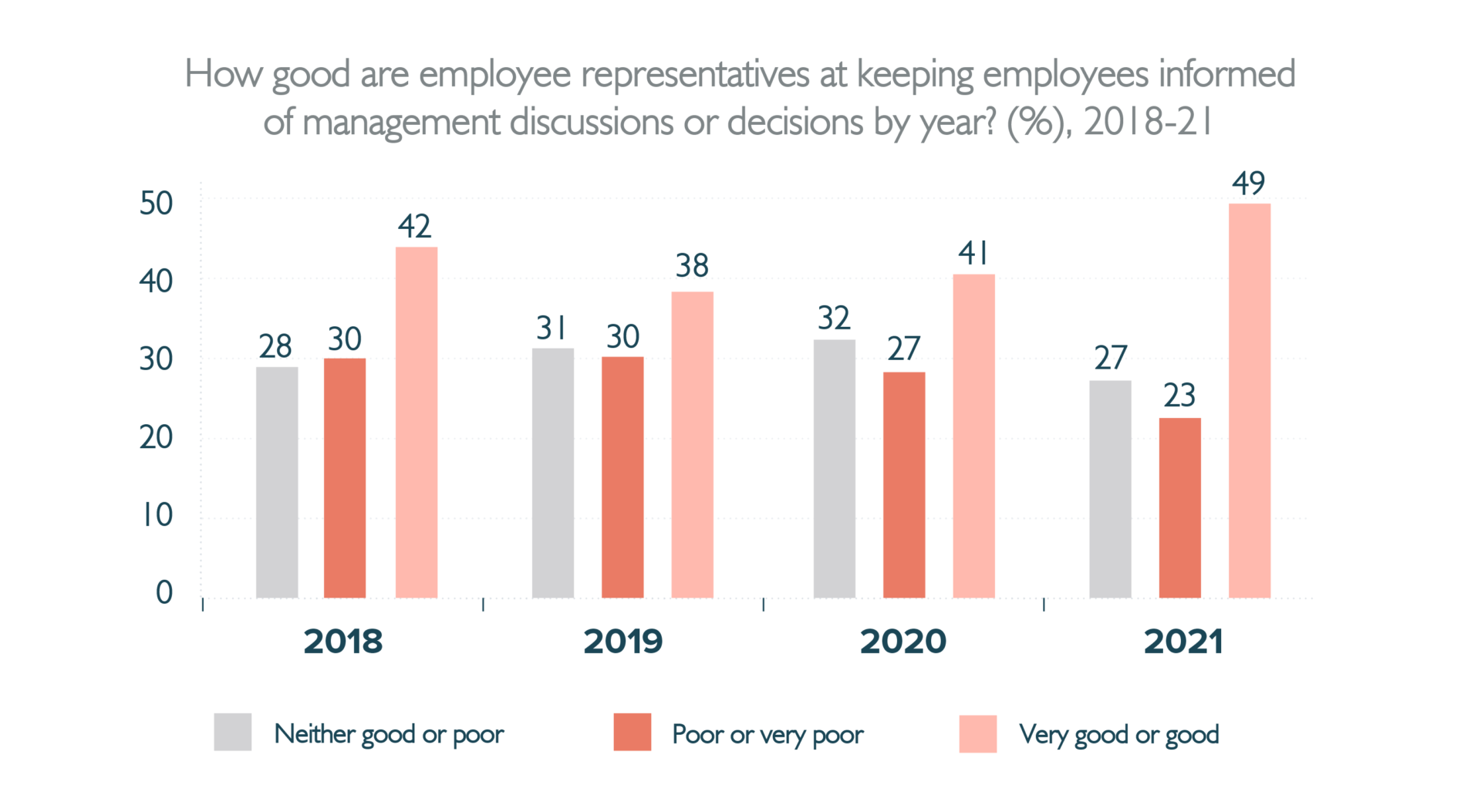
This needs to be balanced against the slight increase in those who reported there were no channels for their voice in their organization though; in private sector organizations, 23% of respondents highlighted the lack of channels at their company.
There’s quite a spread in terms of the types of channels used, with some distinction between the size of organization. Employee surveys were used by 32% of workers in medium-sized firms and 66% in large firms but barely reported by anyone in an organization with fewer than 50 people. The top three voice channels in 2021 however continue to be one-to-one meetings, team meetings, and employee surveys. But there has been an increase in the use of all voice channels, perhaps reflecting the effort that has gone into finding more ways to maintain two-way conversations in the face of the new challenges caused by the pandemic.
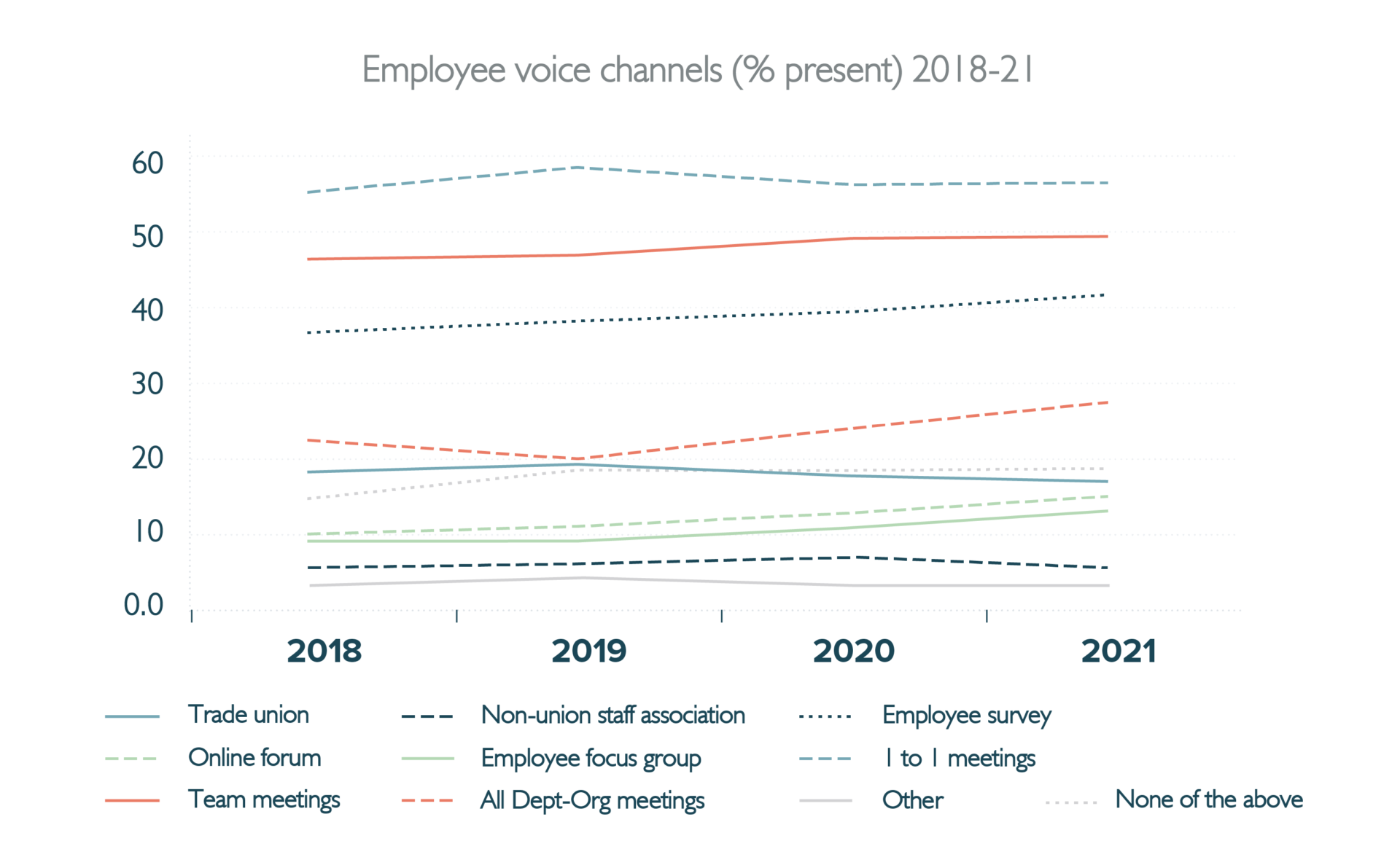
What can employers take from this?
While it’s apparent that employers have actively taken steps to improve relationships and increase opportunities for employees to be heard during the pandemic, the report suggests there’s scope for more. But it’s encouraging to see that worries about how working relationships could be affected by remote working might be unfounded. By investing effort into thinking about how relationships and social cohesiveness can be nurtured remotely, companies have already found ways to successfully maintain relationships and can continue to build on this.
The index’s findings do suggest that organizations need to think about how they can support returning employees, with a need to engage more with furloughed workers. They will not have had as much ongoing contact and that could affect how they’re feeling about going back into a working environment. 41% of employees are anxious about physically returning to the workplace too so greater engagement on health and safety issues and their own personal fears could help to alleviate this. Employers could benefit by thinking about the bigger picture around how to improve voice channels, not only to make sure employees feel heard but so their views have a meaningful impact on decision making. Every employee, including all furloughed workers, need to be reassured that they are being listened to.
Read more: 21 reasons why we want to return to the office
Every job has the potential to be better. There will be limitations in terms of what can be delivered. Yet even by focusing on just one or two aspects of job quality, there’s plenty of potential to make real progress in the constant improvement of employees’ experiences of work.


 How Machias Savings Bank improved employee satisfaction and increased commitment to company values
How Machias Savings Bank improved employee satisfaction and increased commitment to company values
 Great managers vs natural leaders: What’s the difference (and does it matter?)
Great managers vs natural leaders: What’s the difference (and does it matter?)
 Workstars now integrates seamlessly with the HRIS you use every day
Workstars now integrates seamlessly with the HRIS you use every day